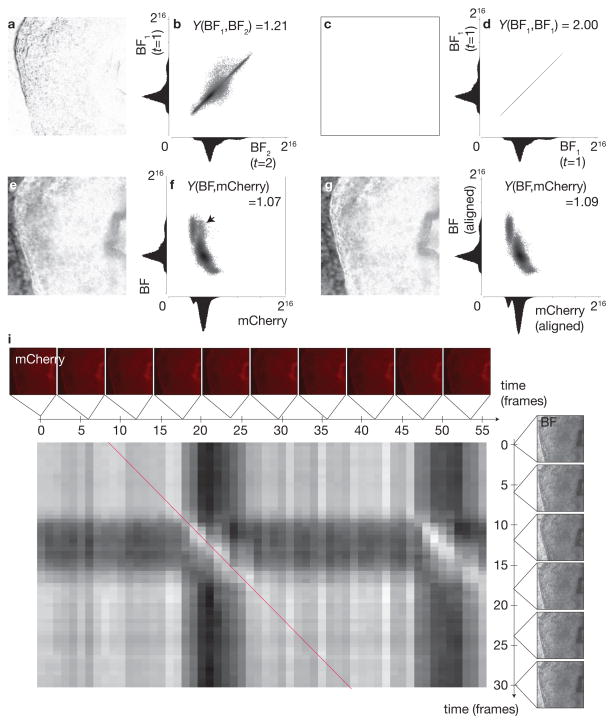Figure 3.
Temporal registration metric is based on normalized mutual information rather than intensity comparison. a–b Comparing two similar but non-identical frames in the brightfield image sequence (Fig. 2 and e) leads to a non-zero absolute difference image (a) and a spread in their joint histogram (b). c–d Comparing two identical frames in a brightfield image sequence (Fig. 2 with itself) leads to a zero absolute difference image (c) and a joint histogram with values concentrated along the main diagonal (d). e–f Comparing two non-matching frames (brightfield image sequence, Fig. 2 and mCherry, Fig. 2) leads to a non-zero absolute difference image (e) and a spread (marked by arrow) in their joint histogram (f). g–h Comparing two matching frames (brightfield image sequence, Fig. 2 and mCherry, Fig. 2) still leads to a nonzero absolute difference image (g; making absolute difference unsuitable as a base criterion for measuring accurately matched images) but joint histogram exhibits less spread (h, compare in region with arrow marked in f). Normalized mutual information Y, (Studholme et al., 1999), increases for matching frames. (i) Normalized mutual information matrix; bright entries correspond to matching frames. Synchronization is achieved by finding a maximum merit path through the matrix to match the test and reference sequences (red line).

